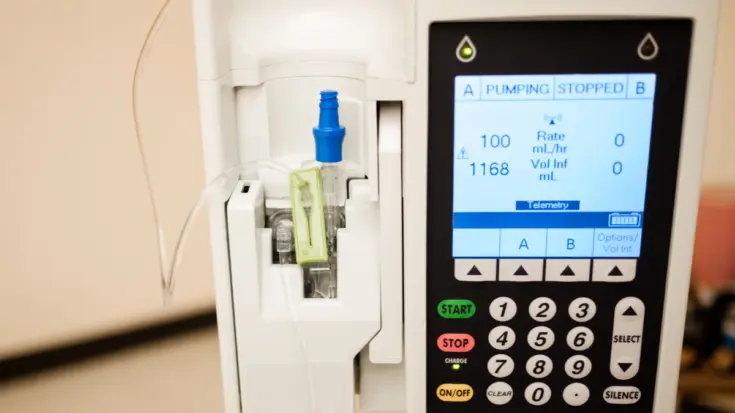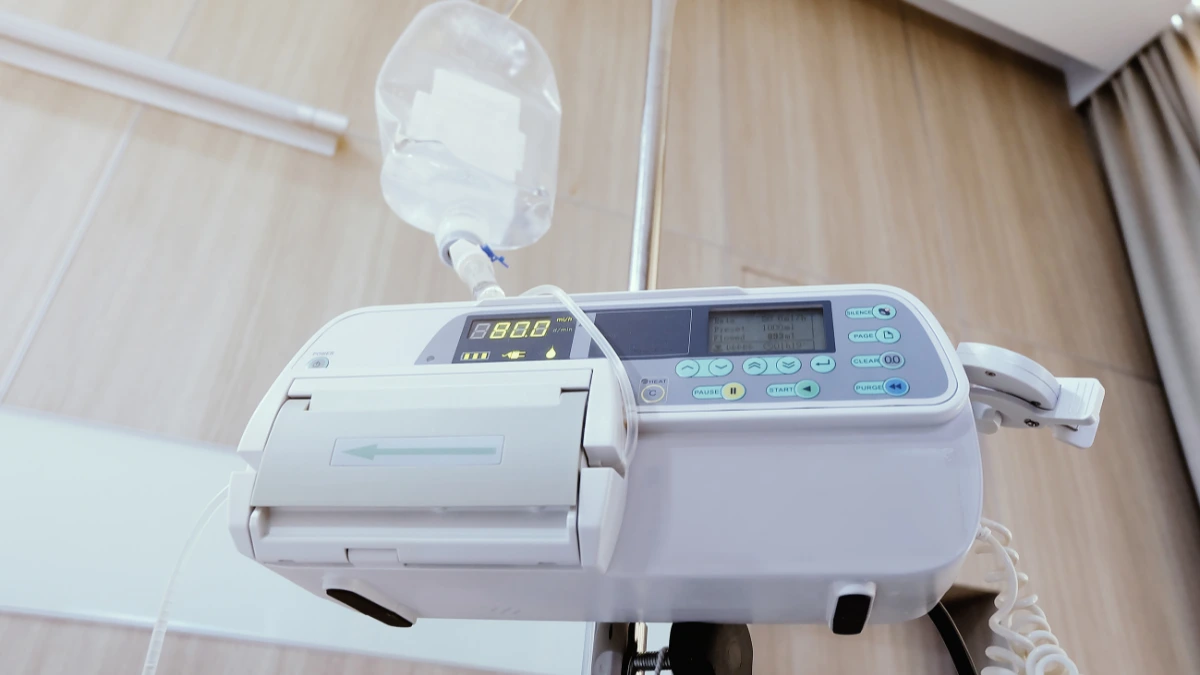The presence of an infusion pump provides the ability to support liquid nutrition delivery. One type of infusion pump is a peristaltic infusion pump, which offers several key functions and advantages.
The functions of a peristaltic infusion pump include controlled fluid delivery and flow rate control. Moreover, the advantages include precise flow control, providing safety, and minimal contamination.
This article will give you information on peristaltic infusion pumps, including their functions, applications, and advantages they have.
Also Read
Table of Contents
What is a Peristaltic Infusion Pump?

One type of infusion pump is a peristaltic pump that uses the concept of peristalsis in the digestive tract. This concept involves alternating squeezing and pushing movements on a flexible tube.
In infusion pumps, this concept is used precisely and in a controlled manner to deliver infusion fluids into the patient’s body. Peristaltic pumps use rollers to push fluids through the tubing.
The Functions of the Peristaltic Infusion Pump
The peristaltic infusion pumps have several functions, from controlled fluid delivery to flow rate control. Here are some of its functions:
- Controlled fluid delivery: Designed to deliver fluids into the patient’s body in a controlled manner.
- Contamination prevention: Fluids only come into contact with the inside of the tube, maintaining sterility and reducing the risk of contamination.
- Flow rate control: Adjusts the flow rate of fluids as needed for the patient via the device’s display.
The Applications of the Peristaltic Infusion Pump

With many functions provided by peristaltic infusion pumps, this device is applied for the administration of medication, fluid therapy, the transfer of sensitive raw materials, or pharmaceutical products. These are the following are examples of the application:
- Administration of medication
- Parenteral nutrition
- Fluid therapy
- Apheresis procedures (to separate components during plasma exchange)
- Transfer of fluids without contamination
- Transfer of sensitive raw materials or pharmaceutical products.
The Advantages of Peristaltic Infusion Pump
The peristaltic infusion pump has several advantages, from precise flow control, providing safety, to minimal contamination. Here are some of its main advantages in detail:
Precise flow control
Peristaltic infusion pumps use rollers to squeeze flexible tubing to regulate fluid flow. This allows for precise control of medication and nutrition delivery at the correct dosage.
Flexibility
Another advantage of this infusion pumps is their flexibility. These devices can be used for various types of fluids, including thick fluids or those containing particles.
Providing safety

Peristaltic infusion pumps is designed with safety features to prevent medication errors. Additionally, it is equipped with sensors to detect air in the tubing or blockages.
Minimal contamination
Minimal contamination is another advantage of this infusion pump. Using this device reduces contamination because the fluid only comes into contact with single-use tubing.
Conclusion
Those are the definitions, functions, applications, and advantages of peristaltic infusion pumps that you need to know.
This type of infusion pump greatly controls fluid delivery. By providing safety, these infusion pumps provide precise control of medication and nutrition delivery at the correct dosage.
This type of infusion pump significantly assists the administration of medication, fluid therapy, and transfer of sensitive raw materials or pharmaceutical products.
By enhancing security in several sectors, X-ray detectors for security can greatly improve inspection efficiency and detect threats earlier.


















